Just two hours from Stavanger and even closer to Kristiansand, the charming town of Flekkefjord is one of southern Norway’s best-kept secrets.
With white wooden houses, historic streets, and water in almost every direction, it’s a perfect day trip destination. Or better yet, a great overnight escape for those embracing slow travel.

Home to just 6,000 people, Flekkefjord offers a quiet charm that’s increasingly hard to find in a world of overtourism.
Whether you're drawn by history, coastal beauty, or quirky attractions like rail biking through mountain tunnels, this little town is well worth your time.
I visited during a summer stay in Kristiansand. My original plan was to explore eastward toward Lillesand or Arendal, but a glance at the map pulled me west.
Flekkefjord stood out for its intriguing layout and the promise of views across fjords and inlets in every direction. I’m glad I made the detour.
A Well-Preserved Waterfront Town
One of the first things that struck me about Flekkefjord was how well-kept and peaceful it felt. The town centre hugs the water’s edge, and with small boats puttering in and out of the harbour, there’s always a sense of life by the sea.
Thanks to the layout of the town, you’re never far from the water. Whether walking through the harbour promenade, narrow residential lanes, or the central shopping streets, you’re likely to find yourself circling back to the waterfront without even trying.
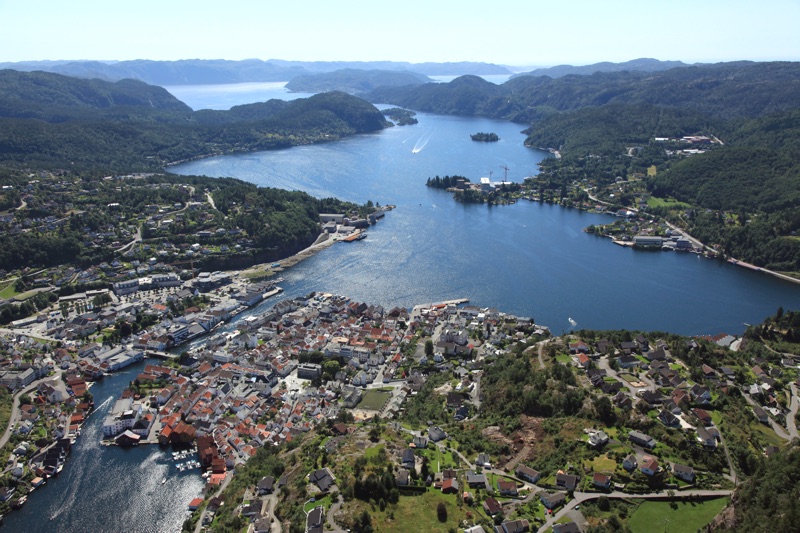
Despite its modest size, Flekkefjord’s centre has a decent variety of shops and services.
Many Norwegians visit as part of a summer trip along the Southern Norway coast, but it’s still largely under the radar for international tourists. That's one of the things that makes it so enjoyable to explore.
The Dutch Quarter
Nestled in the northern edge of Flekkefjord, the Dutch Quarter, locally known as Hollenderbyen, dates back to the 1500s and 1600s.
Its origins lie in the town’s extensive trade with the Netherlands, particularly in timber, stone, lobster, fish, and herring.
Wealth from these exchanges shaped not only the town’s economy but also its built environment. By the 18th and 19th centuries, timber from Flekkefjord was being used in the expansion of Amsterdam’s iconic canal rings.
Even in 1736, some 300 Dutch ships reportedly arrived in Flekkefjord to collect paving stones and oak. The name Hollenderbyen remains a tribute to the many Dutch traders who settled in Flekkefjord, often staying through the winter.
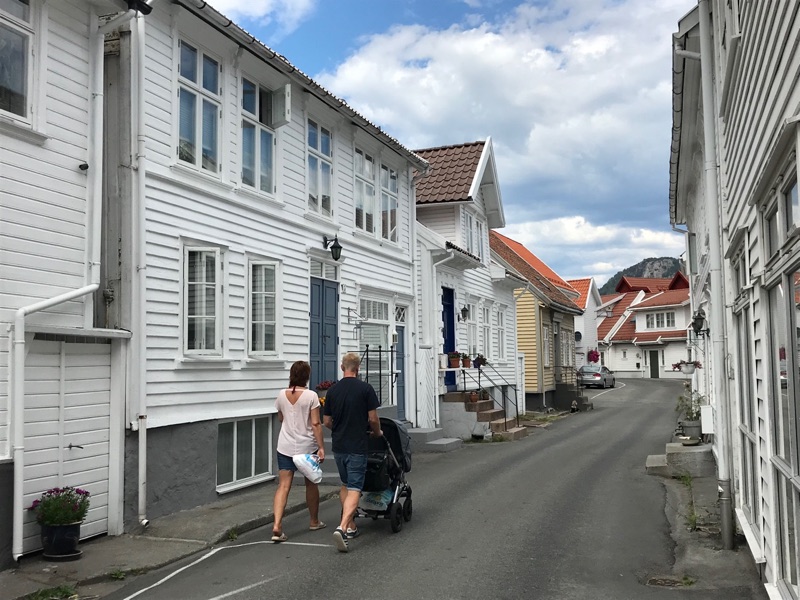
They helped transform a simple trading post into a vibrant mercantile centre, with cultural ties that endure in the local dialect and family histories.
This blend of Norwegian and Dutch influence is reflected in the very timber and granite used to build homes and churches that remain today.
Wandering through the Dutch Quarter feels like stepping into history. Most of the houses are painted white, windows adorned with classic pane designs, while a few brightly coloured façades and street art modernise the narrow cobblestone lanes.
The area is quiet and residential but visually striking, with wrought‑iron lanterns, ornate doorframes, and window boxes spilling over with flowers.
Flekkefjord Museum, housed in a captain-trader’s home built around 1724, is a highlight. Inside, you can discover furnishings and décor from the late 18th to early 19th centuries, offering insight into the daily lives of the merchant class. Yet, arguably, the real exhibit is the Quarter itself.
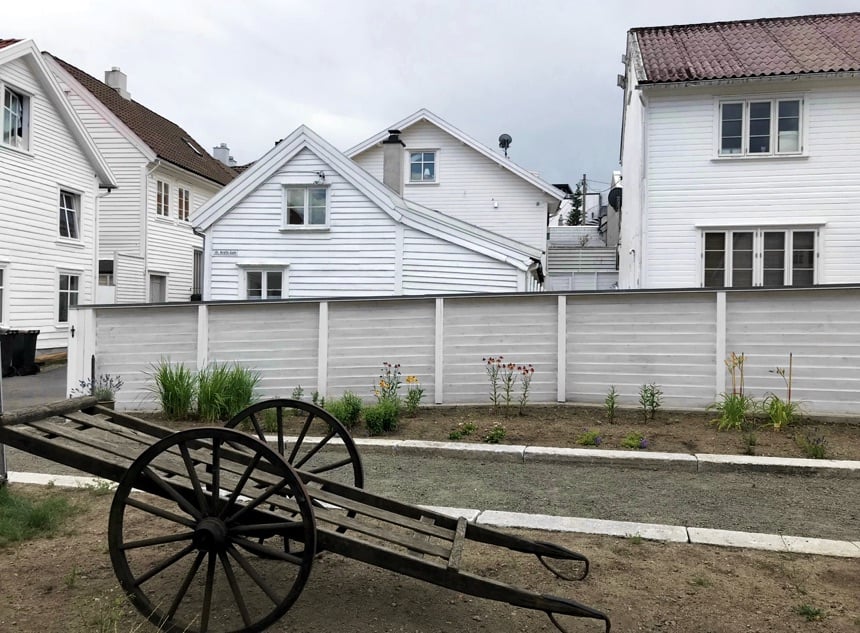
In short, Hollenderbyen is both a living heritage site and a vibrant reminder of an era when Flekkefjord was a crucial link in Northern Europe’s timber and herring trade. It was a district where Norway and the Netherlands met in wood, stone, and culture.
Flekkefjord Church
At the heart of the town centre stands Flekkefjord Church, a distinctive white, octagonal wooden building that dates back to 1833. Its unusual shape immediately catches the eye, even in a town filled with charming architecture.
Octagonal churches are a rare but recognisable feature of Norwegian ecclesiastical design, particularly in the south, reflecting both local tradition and the influence of 18th-century European architecture.
Constructed entirely from wood, the church was built to accommodate the town’s growing population during a time of economic growth and expanding trade.
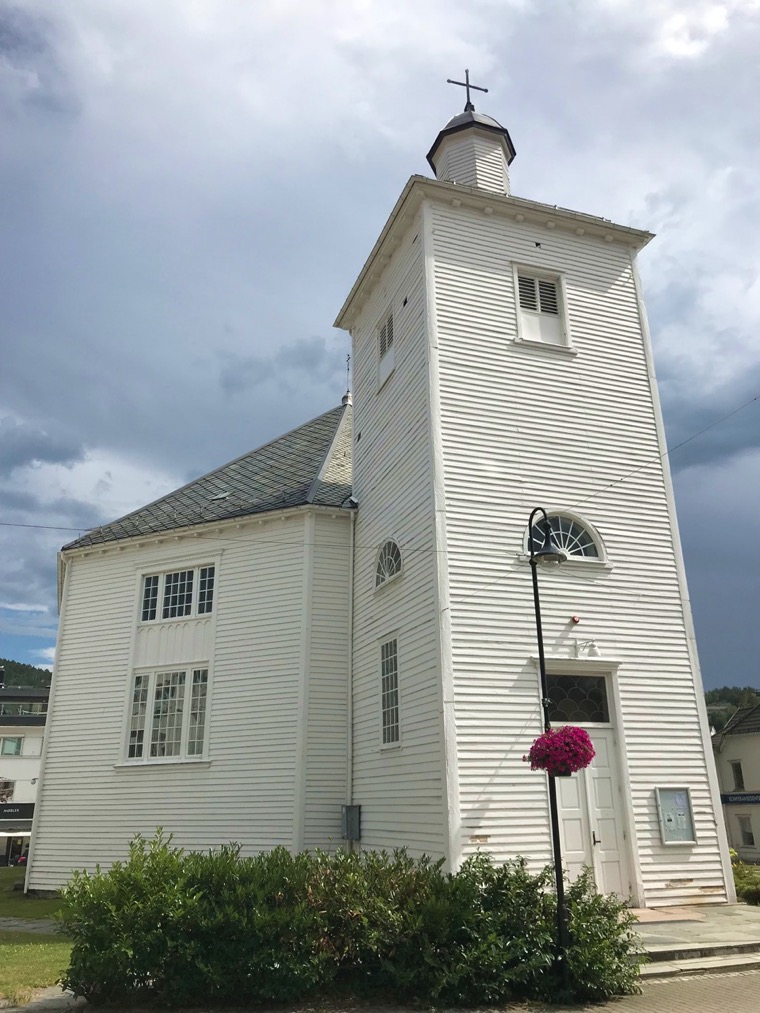
Step inside, and you'll find an unexpectedly spacious interior with seating for around 650 people. Two wraparound galleries line five of the eight walls, giving the space a layered, almost theatrical feel.
The décor is simple yet elegant, in keeping with the Lutheran tradition. The most striking feature is the altarpiece, which consists of a gold cross framed by two classical columns and topped with a carved gable.
Sunlight streams through tall arched windows, casting a warm glow on the polished timber walls and pews.
Rail Biking Along the Old Railway Line
One of the more unusual experiences you can enjoy in Flekkefjord is rail biking along the old railway line that once connected the town with the Oslo-Stavanger route.
Passenger service ended in 1990, but today the 17km stretch of track between Flekkefjord and Sira has been repurposed for tourism.

Visitors can now pedal specially built rail bikes—two-seater pedal carts with space for a passenger—along the old tracks.
The journey begins at the former Flekkefjord railway station in the town centre and takes you through no fewer than 17 tunnels carved into the mountainside. The scenery is wild and dramatic, with forests, cliffs and rushing water flanking the route.
Riding in one direction takes about 90 minutes, with a short wait at the turning point before heading back. The round trip takes about 3.5 hours in total. Only two departures are available per day during the summer to avoid collisions on the single track. Book in advance, especially in peak season.
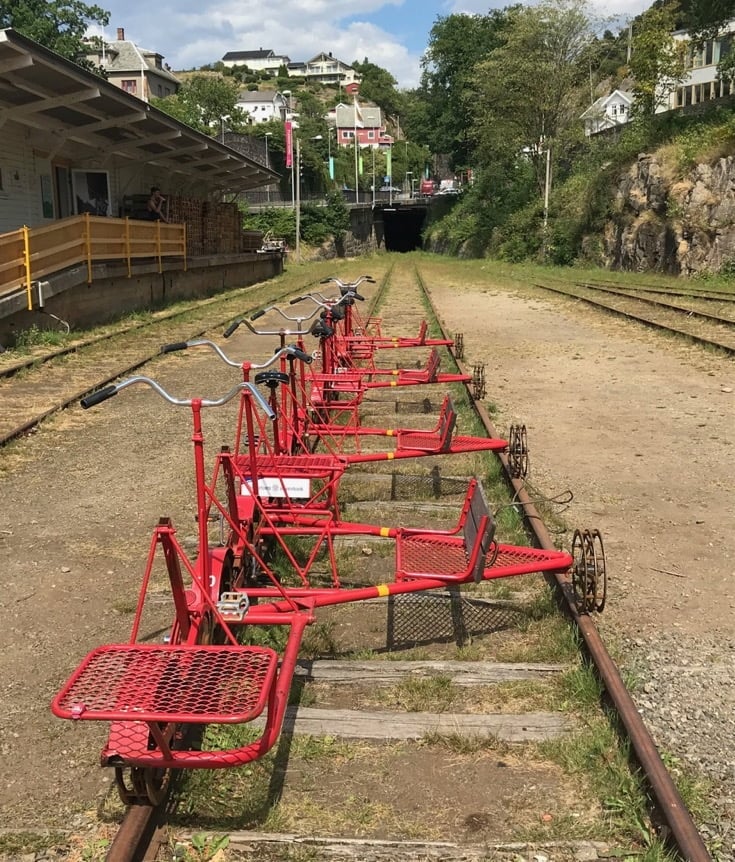
It was here I finally ran into other international tourists—a large German tour group, clearly excited for the ride. The manager told me they get German visitors every single day during the summer season.
Magma UNESCO Global Geopark & Surroundings
Flekkefjord is also a gateway to the Magma UNESCO Global Geopark, a fascinating natural region stretching across several municipalities, including Eigersund, Lund and Sokndal.
What makes the area so special is its unique geology. More than 900 million years ago, molten rock cooled to form a rugged, moon-like landscape.
Today, the geopark promotes sustainable tourism, education and outdoor activities. Hiking, cycling, climbing, fishing, and swimming are all popular, and there are marked trails across much of the region.
One highlight I didn’t manage to visit—but wish I had—is the Brufjell potholes at Åna-Sira, just outside Flekkefjord.
These large, smooth rock formations sit 15 metres above the sea and were carved out during the last Ice Age. The hike to reach them is steep and challenging in places, but the views are well worth the effort.
Where to Stay in Flekkefjord
While Flekkefjord works beautifully as a day trip from Kristiansand or Stavanger, it’s also worth considering an overnight stay if you prefer a slower pace of travel.
The standout option in town is the Grand Hotel Flekkefjord, a historic 29-room property known for its distinctive Swiss-style architecture and octagonal towers. With only a handful of rooms, the hotel can book out quickly during summer weekends and small local events, so plan ahead.
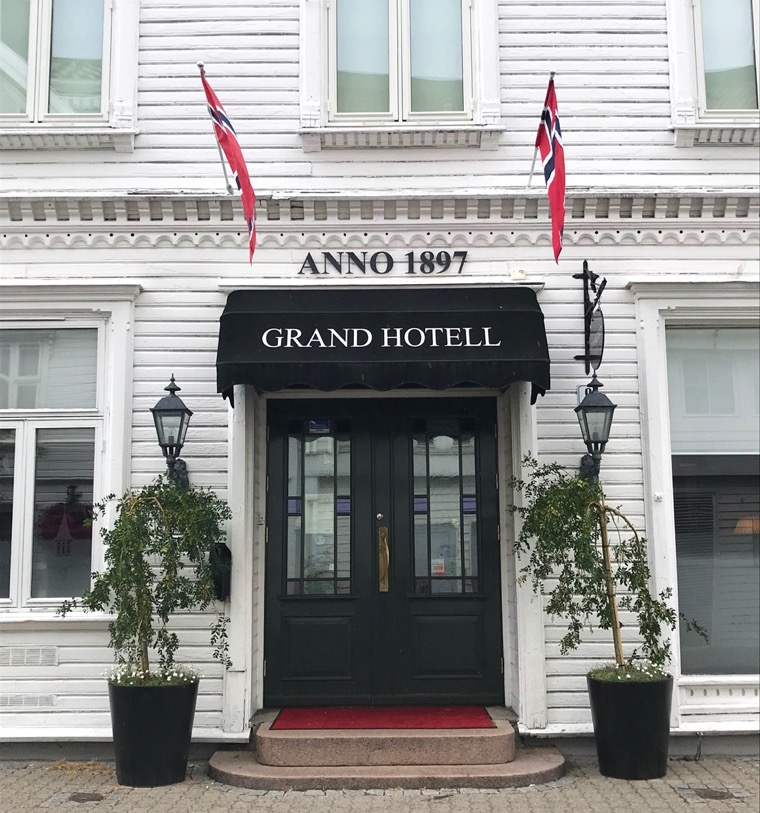
Another option is the Maritim Fjordhotell, a larger waterfront property known for its relaxed terrace and direct views of the harbour.
How to Get to Flekkefjord
You don’t need a car to visit Flekkefjord—public transport makes it surprisingly accessible.
The express coach runs three times daily between Stavanger and Kristiansand, with a stop in Flekkefjord around halfway. The journey takes about two hours from Stavanger and slightly less from Kristiansand.
I booked my ticket a couple of days in advance and paid 215 kroner each way. Booking online often gives a small discount, and while the coach was modern and comfortable, it’s worth noting there was no Wi-Fi onboard during my trip.
That's something to be aware of if you’re planning to get work done or pass the time watching Netflix while travelling. However, it's been a few years since my trip now, so things may well have changed.
Flekkefjord surprised me in the best possible way. I expected a sleepy coastal town and found a place full of history, culture, and unique experiences.
From Dutch-influenced streets and waterside cafés to tunnels carved through solid rock, there’s far more here than you might expect from a town of this size.


Interesting article about Flekkefjord. When we had a cabin in Kvinesdal that we visited every summer, we always took a trip in Flekkefjord. That railroad “spur” had a funny nickname – I just can’t think of it now. Do you know what it is?
Hello,
I want to take a trip to Flekkefjord next year, the town from which my great grandfather, Jan Marinus Rasmussen, left for a new life in the United States. Is there transport by rail from Oslo to Kristiansand? I think the bus ride sounds lovely between Kristiansand and Flekkefjord. Lovely way to relax and enjoy the scenery!
Any assistance you can provide would be most appreciated.
Valleri Callahan
Hi, yes you can take a train from Oslo to Kristiansand.